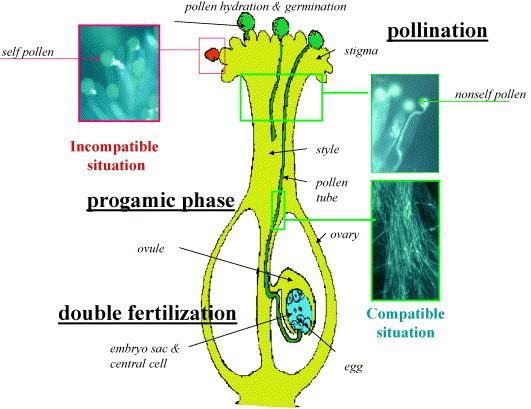Double fertilization

Double fertilization was discovered by
Nawaschin. It is the process in which two sperm nuclei from each pollen tube fertilize two cells in a female gametophyte that is inside an ovule. After the pollen tube enters the gametophyte, the pollen tube nucleus disintegrates and the two sperm cells are released; one of the two sperm cells fertilizes the egg cell forming a diploid (2n) zygote. This is the point when fertilization actually occurs; pollination and fertilization are two separate processes. The other sperm cell fuses with two haploid polar nuclei (contained in the central cell) in the centre of the gametophyte. The resulting cell is triploid (3n). This triploid cell divides through mitosis and forms the endosperm, a nutrient-rich tissue, inside the seed.
The two central cell maternal nuclei (polar nuclei) that contribute to the endosperm arise by mitosis from the single meiotic product that also gave rise to the egg. Therefore, maternal contribution to the genetic constitution of the triploid endosperm is double that of the embryo.